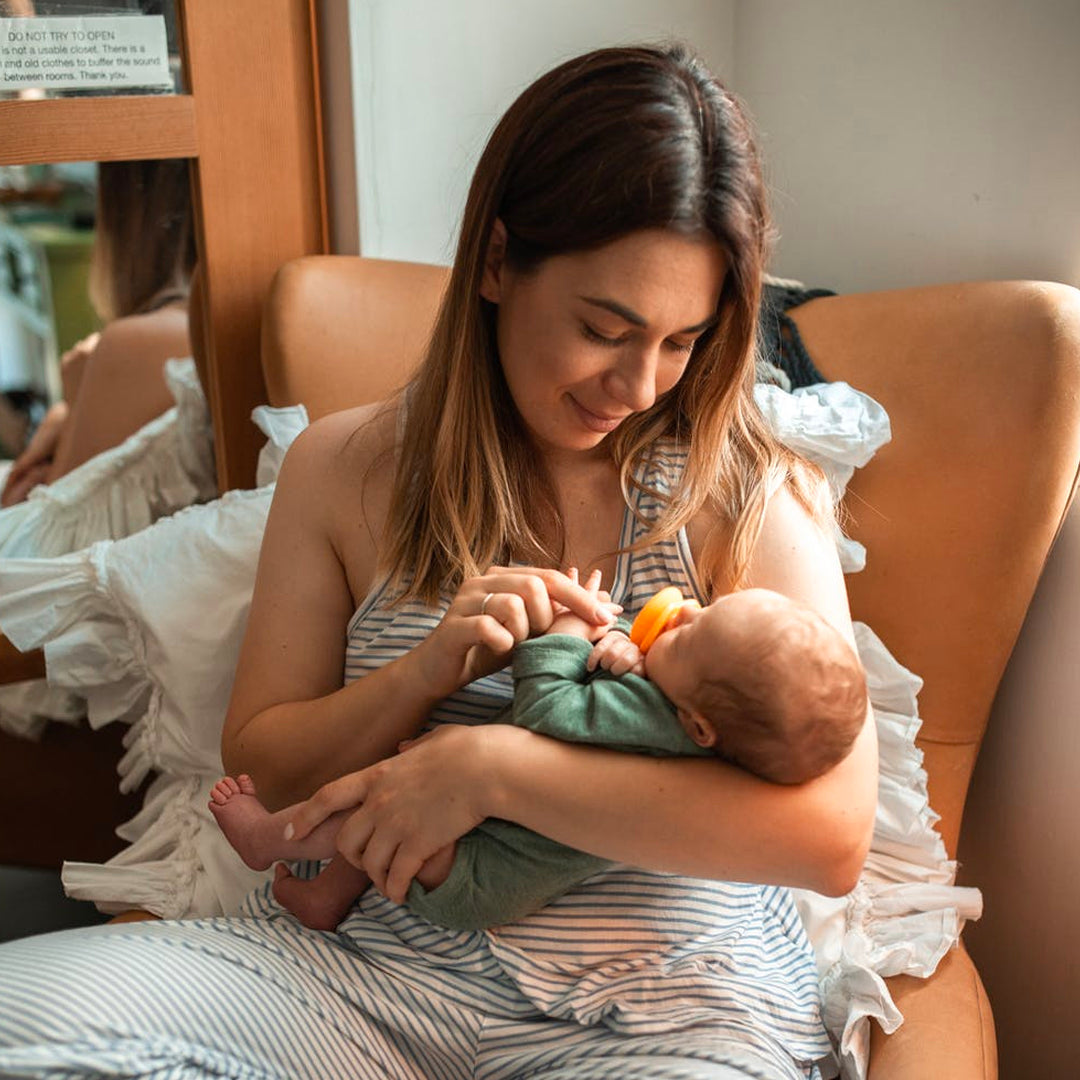Safer sleep advice | Sleep guide for your baby
The newborn stage can be a shock to our sleep system, with babies waking to feed every 2-3 hours on average. Sleep deprivation can leave you feeling like a walking zombie, making you long for those uninterrupted nights of sleep. It’s no surprise that parents look for ways to help their little ones sleep better, but it's essential to prioritize safe sleep practices.
Sadly, about 3,400 babies die each year in the United States from sudden unexpected infant death (SUID), including sudden infant death syndrome (SIDS) and accidental suffocation in bed. The good news is that following proven safe sleep guidelines can significantly reduce this risk and help new parents create a safer sleep environment.
Our advice is based on recommendations from the American Academy of Pediatrics (AAP), a trusted authority in infant health and safety. So, let’s dive into it...

The best sleep position for your baby
Always place your baby on their back for sleep—never on their stomach or side. Back sleeping (known as the supine position) is the safest and most protective sleep position, reducing the risk of SIDS by more than 50%.
Extensive research confirms that placing your baby on their back for every sleep—both naps and nighttime—significantly reduces the risk of SIDS.
Additionally, keeping your baby’s sleep space clear is critical. The AAP advises against adding unnecessary items to cribs, bassinets, or play yards to minimize suffocation risks:
- No pillows or comforters
- No crib bumpers
- No soft toys or stuffed animals
- No loose bedding
- No positioners, wedges, or straps that claim to keep your baby in a specific position
For more safe sleep guidance, visit the AAP Safe Sleep Guidelines: AAP Safe Sleep Guide

Sharing a room with your baby
The AAP recommends room-sharing (not bed-sharing) for at least the first six months, and ideally up to one year. Your baby should sleep in their own separate sleep space, such as a crib, bassinet, or play yard, placed in your bedroom.
Sleeping on a couch or in an armchair with your baby is extremely dangerous. Studies show that accidental suffocation and SIDS risks increase significantly when sleeping on a couch or recliner with a baby. If you feel drowsy, always place your baby in a safe sleep space before dozing off.
More on AAP room-sharing recommendations: AAP Safe Sleep Policy

Is it safe to co-sleep?
Some parents choose to bed-share, but the AAP strongly advises against co-sleeping due to the increased risk of SIDS, suffocation, and accidental death. However, if parents doze off accidentally, there are steps to make the bed safer:
- Keep all pillows, blankets, and stuffed animals away from the baby
- Ensure no pets or other children are in the bed
- Make sure mattress is firm and flat
You should never share a bed with your baby if:
- Either parent smokes (even outside the home)
- Either parent has consumed alcohol, drugs, or medication that causes drowsiness
- The baby is under 37 weeks gestation (born premature)
- The baby weighs under 5.5 lbs (2.5 kg) at birth
- One or both parents are extremely exhausted
For more AAP guidance, visit: AAP Sleep Position and SIDS

Safe room temperature for sleep
Babies should be comfortably cool, not overheated. Overheating increases the risk of SIDS. A safe room temperature for sleep is 68-72°F (20-22°C).
Use light layers or a well-fitted sleep sack instead of loose blankets. Check your baby’s tummy or back of the neck—if they feel sweaty, remove a layer.
More AAP guidelines: AAP Safe Sleep Recommendations
We hope this information helps you feel more confident about safe sleep for your baby. For further details, visit the AAP website.
Baa for now x






